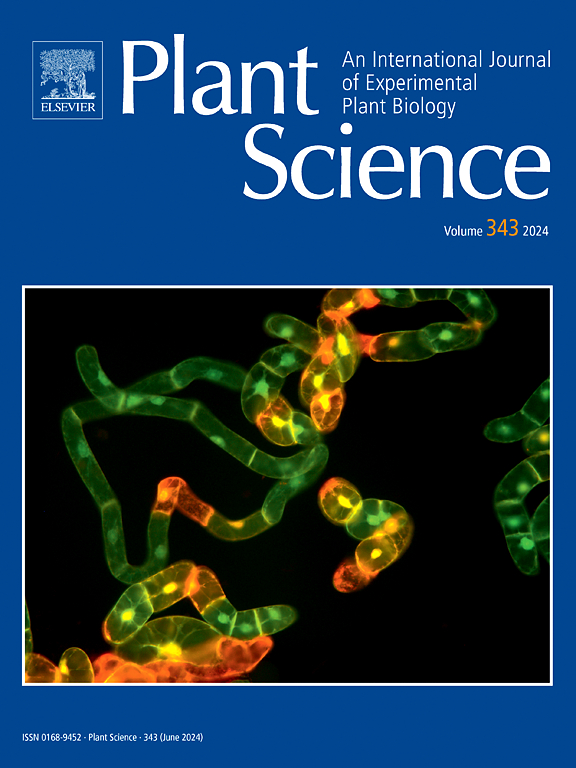鉴定玉米中的 1,6-二磷酸果糖醛缩酶(FBA)家族基因并分析 ZmFBA8 的磷酸化调控。
IF 4.2
2区 生物学
Q2 BIOCHEMISTRY & MOLECULAR BIOLOGY
引用次数: 0
摘要
果糖-1,6-二磷酸醛缩酶(FBA)是一类醛缩酶,它既是参与卡尔文-本森循环、葡萄糖生成和糖酵解等碳水化合物代谢的酶,也是参与蛋白质结合、基因转录和信号转导的非酶蛋白。在一些植物物种中已经发现了 FBAs,但有关玉米(Zea mays)中 FBA 家族基因、其生物学功能和翻译后调控的信息还很有限。本研究鉴定了玉米中的九个 I 类 FBA(ZmFBA1 至 ZmFBA9)和一个 II 类 FBA(ZmFBA10)。磷酸化蛋白质组分析进一步揭示了多个 ZmFBAs 被磷酸化。我们发现,ZmFBA8 中 Ser32 处的磷酸化抑制了其 FBP 结合和酶活性。ZmFBA8 功能缺失会降低玉米幼苗的生长。我们的研究结果表明,磷酸化是 ZmFBA8 功能的一个重要调控机制。本文章由计算机程序翻译,如有差异,请以英文原文为准。
Identification of the fructose 1,6-bisphosphate aldolase (FBA) family genes in maize and analysis of the phosphorylation regulation of ZmFBA8
Fructose 1,6-bisphosphate aldolase (FBA) is a class of aldolase that functions as enzyme participating in carbohydrate metabolism of the Calvin-Benson cycle, gluconeogenesis, and glycolysis, and also as non-enzymatic protein involving in protein binding, gene transcription, signal transduction. FBAs have been identified in a few plant species, however, limited information is known regarding FBA family genes, their biological functions and posttranslational regulations in maize (Zea mays). In this study, nine class I FBAs (ZmFBA1 to ZmFBA9) and one class II FBA (ZmFBA10) in maize were identified. Phosphoproteomic analysis further revealed that multiple ZmFBAs were phosphorylated. We showed that phosphorylation at Ser32 in ZmFBA8 inhibited its FBP binding and enzyme activity. Loss of ZmFBA8 function reduced the growth of maize seedlings. Our results suggest that the phosphorylation is an important regulatory mechanism of ZmFBA8 function.
求助全文
通过发布文献求助,成功后即可免费获取论文全文。
去求助
来源期刊

Plant Science
生物-生化与分子生物学
CiteScore
9.10
自引率
1.90%
发文量
322
审稿时长
33 days
期刊介绍:
Plant Science will publish in the minimum of time, research manuscripts as well as commissioned reviews and commentaries recommended by its referees in all areas of experimental plant biology with emphasis in the broad areas of genomics, proteomics, biochemistry (including enzymology), physiology, cell biology, development, genetics, functional plant breeding, systems biology and the interaction of plants with the environment.
Manuscripts for full consideration should be written concisely and essentially as a final report. The main criterion for publication is that the manuscript must contain original and significant insights that lead to a better understanding of fundamental plant biology. Papers centering on plant cell culture should be of interest to a wide audience and methods employed result in a substantial improvement over existing established techniques and approaches. Methods papers are welcome only when the technique(s) described is novel or provides a major advancement of established protocols.
 求助内容:
求助内容: 应助结果提醒方式:
应助结果提醒方式:


